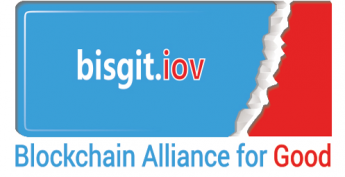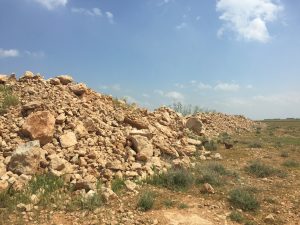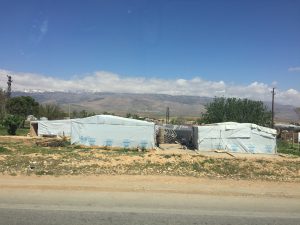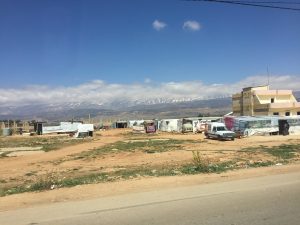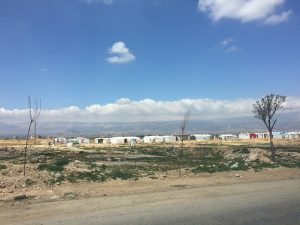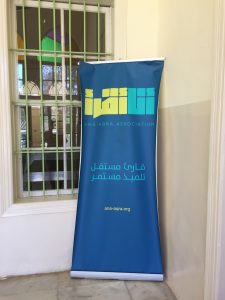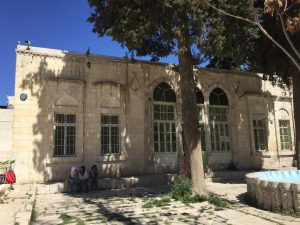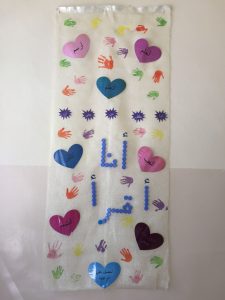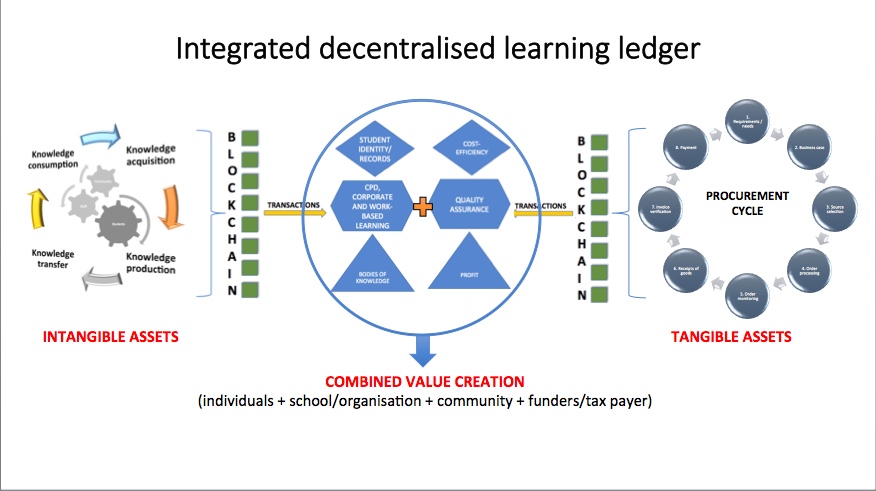The case of the digitally poor and how Blockchain can help
Our first Blockchain meeting took place on Friday May 5 at the Innovation Centre. It went well as we were buzzing with ideas and ways in which Blockchain can help across all aspects of human life. Of course a cursory look at the many twitter sites and the growing number of websites dedicated to Blockchain show that the main interest is still within the Fintech word.The legacy of the cryptocurrency is still strong and economically a great disruptive force. Yet, as I argued in the Blockchain Educational Passport: Decentralised Learning Ledger, the 4th Industrial Revolution is not about money, but about people, and about procuring knowledge.
In this post I would like to draw the attention to and start a conversation about the ‘digitally poor’. In doing this, I will define poverty along the lines of the capability approach and the human development paradigm, as a deprivation of capabilities, that is, opportunities to lead a life each has reason to value. Within this definition of poverty, I argue that the ‘digitally poor’ are going to be those who have no means to show what they know, what they can do, and who they are. The digitally poor are the known unknowns and in a world that is becoming more and more connected and they are islands of disconnection, numbers in statistics at best, or invisible at worst. The post is a starting point and more, I hope, will follow.
Case 1: Ann’s story
Almost 20 years ago I was working as a Learning Teaching Assistant in a secondary school supporting the inclusion of young people with disabilities and learning difficulties. Ann was a 13 years old girl certified as having dispraxia, dislexia, discalculia and, fundamentally, ‘dis’-functional at many levels of basic skills. Yet, Ann could tell my state of mind as soon as I enter the room. She could tune in and empathise at a deep level with the people around her. She was, as far as the school was concerned, a ‘good girl, who tried hard’ but clearly had limited success. In Math, for example, she was still asked to add and subtract to 100. Divisions and multiplications were deemed too hard and nobody mentioned any of the other key mathematical skills a Year 9 should have had. All her school life, she was kept behind without a chance to move forward.
Yet, one morning at one of our weekly meetings we found out that during the previous few weeks Ann had been looking after her mother who had been lying in a dark room and living with depression. Of course, she had also been looking after her younger sister, and the house. She cooked, cleaned, did the shopping, paid the bills, and still came to school to be our ‘good girl’. When I pointed out that in order to do all such things she needed to be able to use math, at least at an intuitive level, and that we could have done something to take this into account, I was told that … well, no, it was not what schools do. Schools are bound to label our children for how well they pass the academic testing. For how well they fit artificially drawn boundaries in our curriculum. Because there was no other way to show what Ann could do, we could not measure her real value as a human being. We were happy to label her as dis-functional, morally inclined to admit that she was kind and caring, but otherwise unwilling to testify her abilities.
Ann is by no means the only child or adult with learning difficulties or disabilities who suffers the injustice of being ‘poor’.
Case 2: Islands in the desert
We have left Beirut and we are steadily climbing the Mount Lebanon Ridge heading toward Hermel at the farthest North point of the Bekaa Valley and less than 30 minutes drive to the Syrian border on the road to Homs. The furthest North you drive the least luscious and fertile the valley becomes until the land between Mount Lebanon and the Anti-Lebanon mountain range is a semi-arid stone landscape.
Yet, among the stones, there is life. I do not refer to plants, insects and other animals. I refer here to human life. Scattered across the Bekaa all the way from Baalbek to the Northern borders, along the main route to Syria, or tucked away on the limits of the horizons are the settlements of Syrian refugees.
Lebanon has more than 1 million Syrian refugees and by no means are they all settled in the Bekaa Valley. Those who are might not be the best educated, or the ones who had the means to start a new life. They are those who live out of UNHCR’s support mechanisms and who compete for work with the Lebanese in this harsh and unforgiving land. Some might have left with papers showing who they are and what they can do. Others might have left their homes with nothing but the bare necessities. Each one of them has something to give, but they are doubly poor. They are deprived of their homes, money, family, old connections, dignity and above all identity. Uncharted and unknown, they, like many others across the world, inhabit an alternative map of human geography. By all means, they are islands in the desert.
Case 3: More than schooling
Amidst such gloom, there is also hope and education is the key to bringing about change and human development. An example of this is the work carried out by the Ana-Aqra Association. A ‘non-profit, non-sectarian, non-political association founded in 1994 and officially established in 1998’ Ana-Aqra (I read) runs a number of programmes to enable disadvantaged children to thrive and flourish.
One of such programmes is the one I visited in Baalbek, ‘The Children’s Learning Center (CLC) – Al-Madad Foundation‘ which is one of the many initiatives supporting Syrian refugee children. Hosted in old traditional Lebanese house, the Association and the teachers working for them create an environment in which the child is at the centre of learning. For a few hours a day, each child is a person. Not a statistic, not an island, but a human being whose rights to play, to be safe, to be able to read, and to be healthy are enshrined and signed with the colourful prints of the children’s hands.
Yet, because they are refugees, they exist only within the safe boundaries of the school. They are known to the few and ignored by the many. Most importantly, they will be the next digitally poor. In years to come, if we do not develop a system to show what they have learned, they will not exist, unable to prove what they have learned to be and deprived of the opportunities to become.
The Blockchain Educational Passport: adding value to our learning
The ones above are just three cases in which a Blockchain Educational Passport can help. I do not go into the details of how Blockchain can work as part of the more comprehensive CCEG Blockchain UN Lab portfolio. This can be found in the Whitepaper 5.0. The point here is to put forward a draft framework for capturing the ‘combined value creation’ as evidence of impact of learning within a knowledge procurement framework.
The figure below shows an initial blueprint combining both the DLL framework and a more traditional procurement cycle framework. While the former focuses on capturing and making visible the intangible nature of both learning and its impact, the latter makes use of available accountability systems related to the procurement of tangible assets. The key innovative approach is to use Blockchhain to map, track and account for all transactions and produce personalised impact ledgers, or Educational Passports, for both the individuals and the organisations involved in the process.
One of the key features of the iDLL (Integrated Decentralised Learning Ledger) is its flexibility, adaptability and connectivity across different contexts and domains so as to build a more representative eco-systemic view of value creation and impact.
For example, in the case of Ann, it could be possible to make use of a number of already existing documents assessing her academic value (grades, tests, progress reports, Individual Educational Plan) but also devise indicators for measuring social value (in her case her caring responsibilities). In this way, Ann will not be assessed only in terms of academic value (AV) but also in terms of social value (SV). While AV and SV will be a unique measure of personal value (PV) belonging to Ann alone in the form of a personal wallet, part of either AV or PV can be shared with teachers or the school as they contributed to, or not, to Ann’s PV or part of. The same process can be applied to all students and teachers in the school to arrive to a combined organisational value (OV) measure not dissimilar from the already existing S/E ratio. Blockchain will provide the evidence of transactions (both belonging to individuals and to the school) to be kept in the public ledger.
The same approach can be used not only for schools, but also for any organisation (public or private), universities, businesses, NGOs or other associations. This approach allows for both a permanent record of value creation and for a record of its fluctuation over an individual’s or organisation’s lifetime. In the case of schools, the iDLL can make use of current accountability system (such as Ofsted evaluations), but, most importantly, add to them new criteria and indicators which are currently not applied since they do not fall within the tangible assets framework.
There are of course challenges. First of all is the challenge of identifying and agreeing on indicators of social value and of redefining accepted measures of tangible value. Second is the challenge of building the complex technological infrastructure able to support the increased number of transactions, and in some cases to bridge and combine different accountability systems. Third is the challenge of changing users’ mindset with regard to the usefulness of broadening the information base required to make the final evaluation.
All the above are points for future blogs and discussions. Yet, i believe that we need to start now to think about how we can ensure that there are not digitally poor individuals in generations to come. Devising a new system such as the DLL or iDLL is not just a technical challenge, but a moral priority which has the potential to address current inequity and unfairness.
